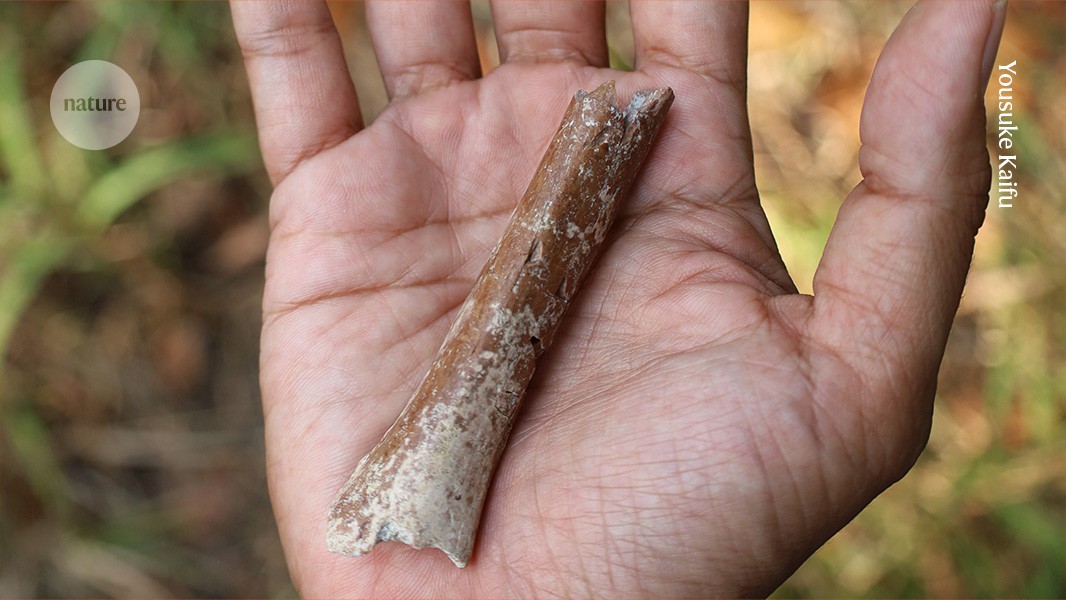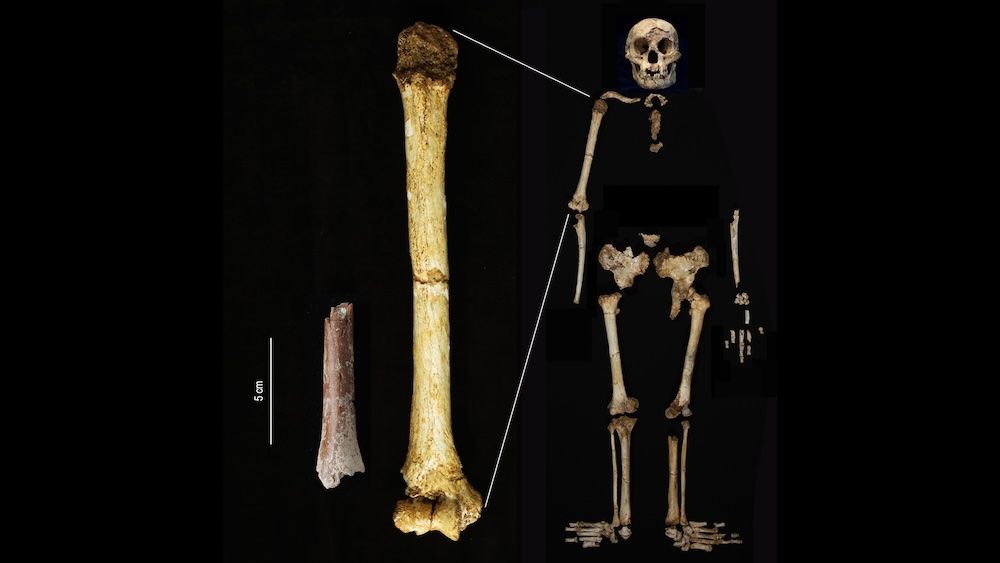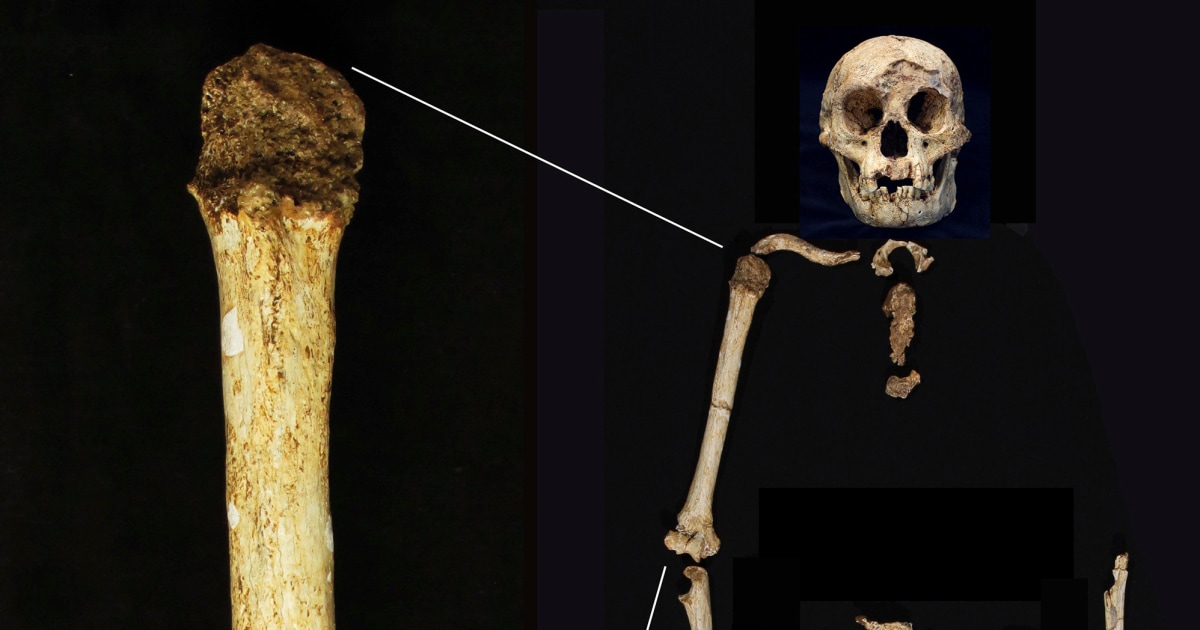A discovery on Flores Island, Indonesia, shows the evolution of one of our most enigmatic ancestors, the Homo floresiensis, often referred to as the hobbit due to its size. A 700,000-year-old arm bone fragment along with other fossils, has been identified as belonging to the smallest known adult hominin.
This finding was detailed in a study published in the journal Nature Communications on August 6, 2024.

Also Read: Archaeologists Discover a 2,400-Year-Old Pot of Gold Coins in Turkey
The first fossils of Homo floresiensis were unearthed nearly two decades ago at the Liang Bua cave on Flores.
These finds, dating back approximately 60,000 years included a nearly complete skeleton of an adult female, who stood about 1.06 meters (3.5 feet) tall.
The hobbit species is characterized by its small size with adults estimated to have been around 1 meter (3.3 feet) tall and a small brain case, resembling much earlier human ancestors rather than modern humans.
Despite its tiny stature Homo floresiensis exhibited advanced behaviors including tool use, which suggests cognitive abilities comparable to larger hominins.
The new fossils were excavated from Mata Menge, a site 75 kilometers east of Liang Bua. This location is one of only two places on Flores where remains of the species have been found.
Among the newly described fossils are a distal humerus fragment, estimated to be 21.1 to 22 centimeters in length and two teeth.
The humerus, though broken and reassembled, belongs to an adult and is the smallest human limb bone ever recorded.
The teeth, though smaller, bear a striking resemblance to those of Homo erectus suggesting an evolutionary link.
The fossilized arm bone, measuring just 88 millimeters in length and it is the smallest humerus ever discovered from an adult hominin.
It provides information about the physical characteristics of Homo floresiensis. The bone was excavated from the Mata Menge archaeological site on Flores Island in 2013 and dates back approximately 700,000 years.
Island dwarfism is an evolutionary process where species become smaller over generations due to limited resources and the absence of large predators.
The discovery of Homo floresiensis exemplifies this phenomenon, highlighting how isolated environments can shape the evolution of species including humans.
Researchers suggest that the ancestors of Homo floresiensis evolved to be smaller within just a few thousand years of arriving on Flores Island.
It is believed that Homo floresiensis may have descended from the larger Homo erectus, who possibly arrived on Flores due to natural events like tsunamis or storms around a million years ago.
Stone tools found on the island date back to one million years ago supporting the theory of early human settlement. The exact lineage of Homo floresiensis remains a topic of debate among scientists.
Also Read: Scientists Reveal Ancient Screaming Mummy May have Died with Pain
Homo floresiensis stood at about 106 centimeters (3.5 feet) tall with a brain size roughly one-third that of modern humans.
Despite these differences they exhibited advanced behaviors, as evidenced by their use of stone tools.
The existence of Homo floresiensis challenges the traditional view that increasing brain size and stature were essential for human evolution.
Researchers propose that Homo floresiensis evolved from larger ancestors, likely Homo erectus, after becoming isolated on Flores around 1 million years ago.
Over approximately 300,000 years, these early humans underwent size reduction. This adaptation might have been advantageous for surviving periodic food shortages given the island’s challenging environment.
The study supports the theory that Homo floresiensis descended from Homo erectus, an archaic human species known to have migrated from Africa around 1.9 million years ago.
Homo erectus fossils have been found across Asia including on the nearby island of Java.
Some scientists question this hypothesis suggesting a closer relationship between Homo floresiensis and other small-bodied hominins such as Homo habilis, which is only known from Africa.
Some say that the new findings do not conclusively prove that Homo floresiensis was a dwarfed version of Homo erectus.
They address that while the small-bodied hominins were present on Flores 700,000 years ago, it remains unclear whether their ancestors were larger or already small when they arrived.
The origins of Homo floresiensis continue to captivate paleoanthropologists. The recent study underlines the need for further excavation and analysis of older sediments, dating back over 1 million years to uncover more about the species’ arrival and evolution on Flores.
The discovery has sparked discussions about the evolutionary pathway of Homo floresiensis. Some researchers like Deborah Argue from the Australian National University, remain unconvinced about the direct descent from Homo erectus.
Other hypotheses propose that Homo floresiensis may have descended from a different, already small-statured hominin that migrated from Africa across Asia.
Also Read: 19th Century Baltic Sea Shipwreck: A Treasure of Champagne and Mineral Water





